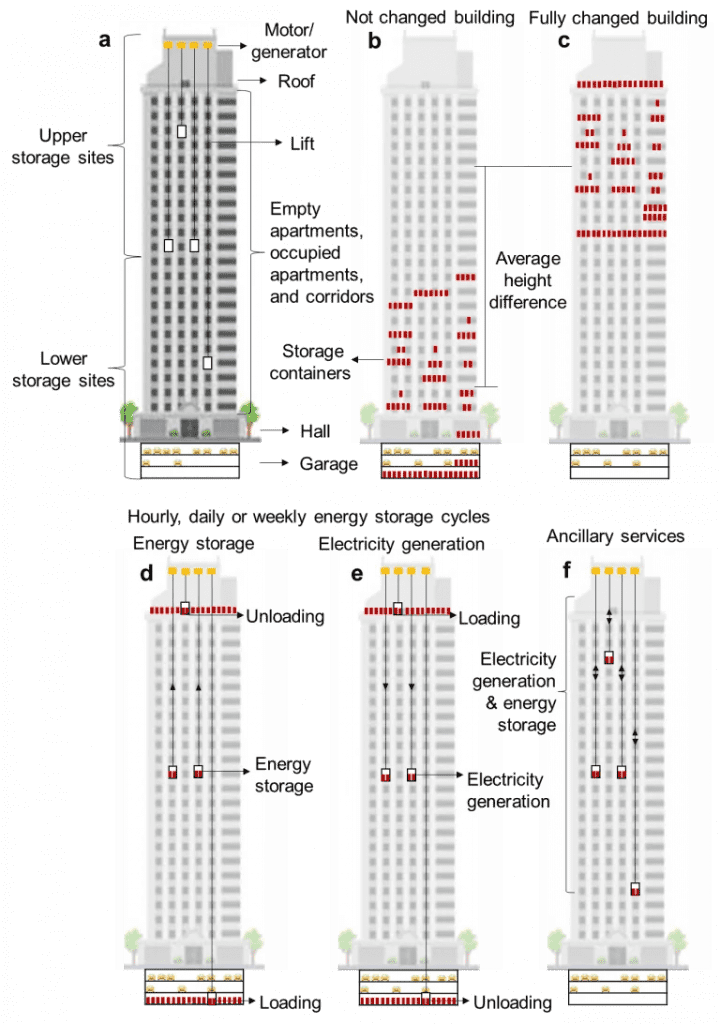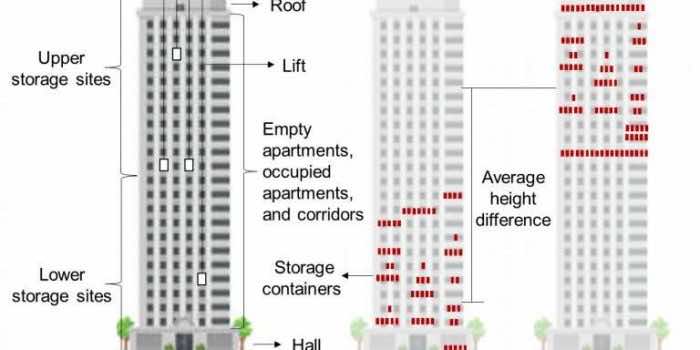Could your nearby tallest buildings serve as a battery? Scientists certainly believe so!
Researchers have developed a unique energy storage system that aims to convert high-rise buildings in cities worldwide into batteries. The International Institute for Applied Systems Analysis (IIASA) has developed an energy storage system that might transform buildings into batteries.

IIASA researchers developed a gravitational-based storage method that employs lifts and empty apartments in high-rise buildings to store energy in their paper published in the journal Energy.
According to sources, the “Lift Energy Storage Technology” (LEST) can store energy by lifting “wet sand containers or other high-density materials that are moved remotely in and out of a lift with autonomous trailer devices.”

All tall buildings have lifts, meaning converting towers into batteries would need no further investment. “The concept of LEST came to me after having spent a considerable amount of time going up and down in a lift since recently moving into an apartment on the 14th floor,” said IIASA researcher Julian Hunt, lead author of the study.
The main principle of the proposal is that most lifts worldwide are not always operational. When lifts aren’t being utilised to transport people, they can be used to store and generate electricity. Lifts can also support them with their power capacity and regenerative braking systems.
Weights are stored at the top (when the device is fully charged) and bottom of the building in the LEST system (when the system is out of battery). The energy weight could also be stored in empty flats and hallways.

Since renewable energy is unpredictable, energy storage and release will become increasingly important in the next generations. This unique solution proposed by IIASA has the potential to deliver cost-effective and decentralised support services to improve the quality of power in metropolitan areas.
“Environmentally friendly and flexible storage technologies like LEST are set to become more and more valuable to society in a future where a large share of its electricity comes from renewables,” said study coauthor Behnam Zakeri in the statement.
“Therefore, policymakers and power system regulators need to adopt strategies to incentivize end-users, in this case, high-rise buildings, to share their distributed storage resources, such as LEST, with the central grid,” Zakeri added.
Source: IIASA


